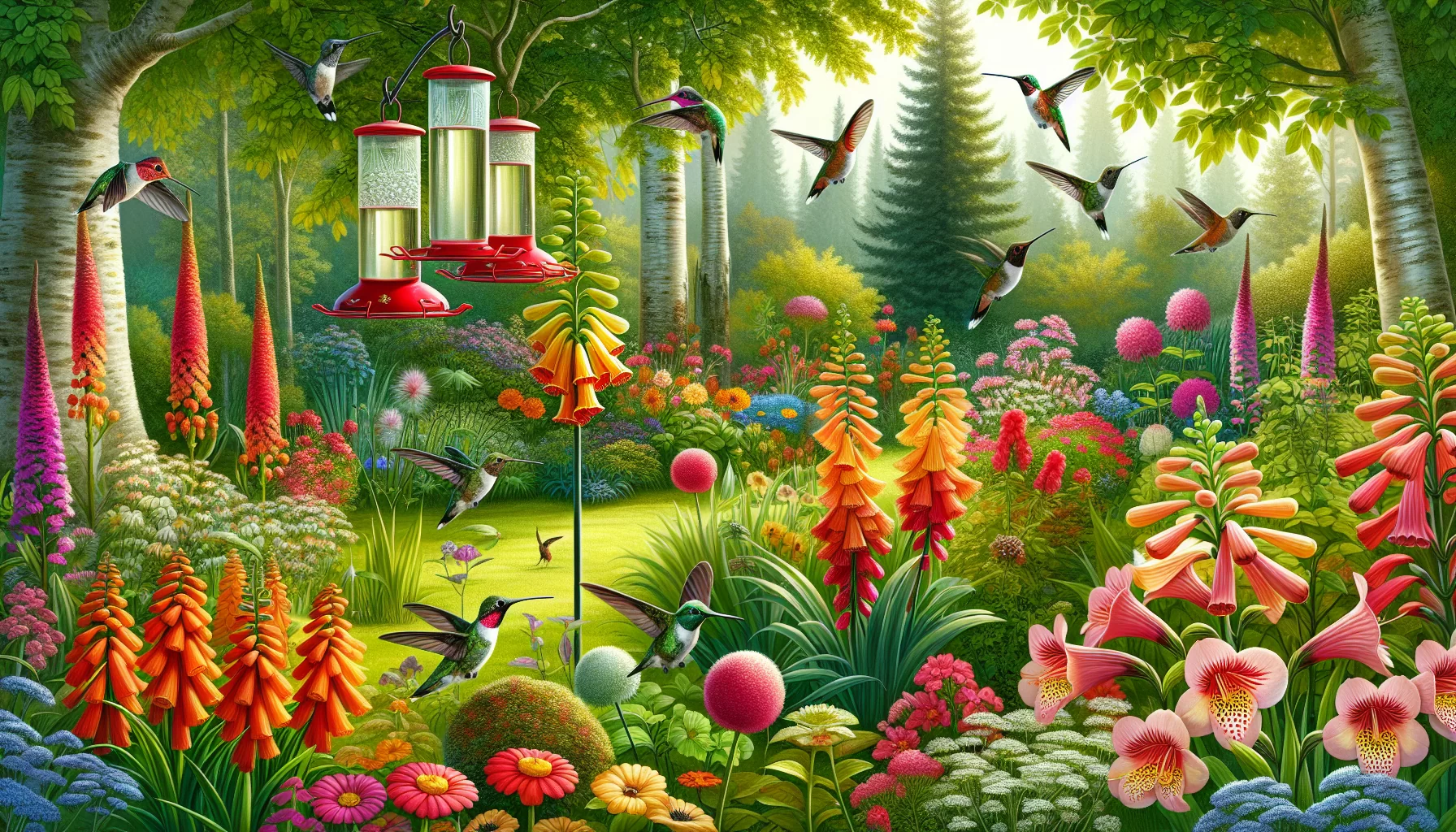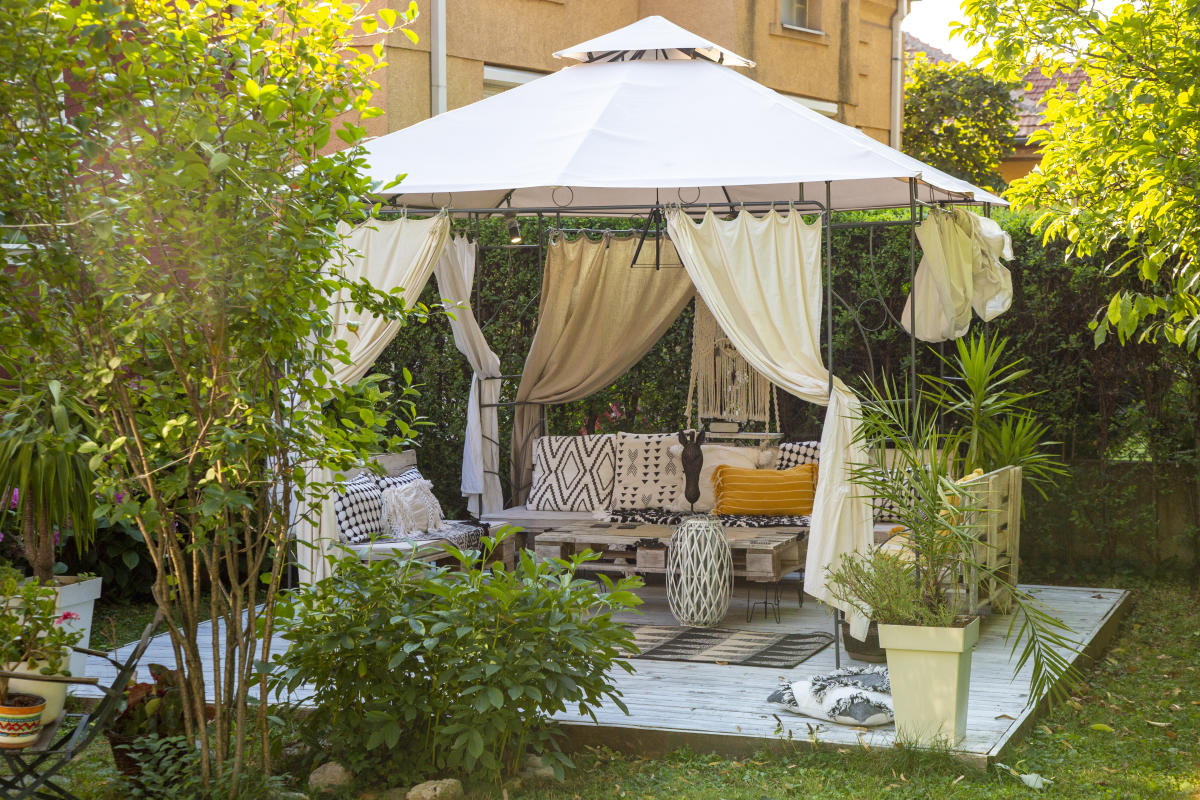Understanding the delicate balance between humans and nature can lead to gardening practices that attract beautiful wildlife to our backyards, creating a thriving ecosystem alongside our own living spaces. One such example is cultivating nest-building plants to invite hummingbirds into our yard or garden.
The magic of hummingbirds
Hummingbirds, tiny avian gems, dart through the air with acrobatic prowess, their wings flickering faster than the human eye can see. These magnificent creatures are not only delightful for their beauty and agility but are also fantastic pollinators that can greatly contribute to the health of your garden ecosystem.
So, what can you do to attract these creatures and help them establish a habitat in your garden? The answer lies primarily in the kinds of plants you choose.
The art of selecting hummingbird-friendly plants
Selecting the right plants can make all the difference when it comes to attracting hummingbirds. But not all plants are equally appealing to these feathered friends. The key lies in choosing specific types of flowers and trees that offer what hummingbirds most need – nesting materials and nectar-filled flowers.
Flower choices for hummingbirds
Choose nectar-rich flowers that are tubular and brightly colored. While hummingbirds feed from a range of hues, they are particularly attracted to red, orange, or pink blossoms. But it’s not just about the color – the tube shape of these flowers accommodates the hummingbird’s long and narrow beak, facilitating feeding while they hover, hardly touching the flower itself.
Key flower selections include Fuchsia, Bee Balm, Coral Honeysuckle, and the aptly named Hummingbird Bush.
Tree and shrub selections for hummingbirds
Hummingbirds look for specific types of trees and shrubs in which to build their nest. Ideal choices include eucalyptus trees, pine trees, and oak trees. They usually make their nests in forks of branches, and the tree should ideally offer good cover to protect from predators.
When we carry out our gardening with mindfulness and intention, we can create havens of biodiversity that not only beautify our surroundings but also contribute positively to the local ecosystem. Hummingbirds are just one species we can nurture, but the impact of our choices extends far wider, echoing our commitment to sustainability and innovative design.
To engage effectively in such green practices, it’s not necessary to be a seasoned gardener. Just begin with an open mind, eagerness to learn, and a love for all creatures in our shared habitat. Reflecting on the natural symbiosis between hummingbirds and certain plants can generate new relationships with the natural world, inspiring us to learn more about the interconnected web of life in our backyards.
Knowing that our individual actions can significantly impact the lives of these tiny creatures should impel us to create green spaces with conscious intent, fostering environmental stewardship and enriching our gardening experience immeasurably.
A garden that vibrates with the hum of hovering wings, where colorful hummingbirds provide beauty, charm and crucial pollination, is a beautiful testament to the power we have to positively impact the environment, right from our own backyard.
Emma Johnson is a passionate and insightful writer specializing in the house and garden niche, bringing over a decade of experience to her readers. At the youthful age of 34, Emma has already established herself as a leading voice in home improvement, landscaping, and interior design. Her journey began with a degree in Landscape Architecture from the University of Georgia, followed by years of hands-on experience working with renowned landscaping firms across the country.
Emma’s writing career took off when she started sharing her unique ideas and eco-friendly gardening tips on her personal blog. Her ability to blend practical advice with aesthetic design quickly garnered attention, leading to her current position as a featured columnist for a prominent online news site.
Dedicated to sustainable living and innovative design, Emma’s articles offer a wealth of knowledge, from DIY home projects to the latest trends in garden technology. Her work not only enlightens homeowners looking to enhance their living spaces but also inspires a deeper appreciation for the environment.
When she’s not writing or experimenting in her own garden, Emma enjoys mentoring young designers and participating in community beautification projects. Her contributions extend beyond her written work, embodying her commitment to making the world a more beautiful and sustainable place, one home at a time.



